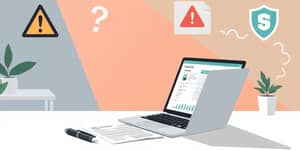Securing funds can feel like navigating a maze of paperwork and collateral requirements. Yet, there is an avenue free of asset pledges—unsecured personal loans. By tapping into your creditworthiness, you can access money for life’s milestones without risking your home or car. This guide unpacks every facet of borrowing based solely on trust, offering clarity and practical steps to secure the financing you need.
Understanding Unsecured Personal Loans
Unsecured personal loans hinge on your reputation rather than your property. Lenders evaluate factors like credit score, income, debt-to-income ratio, and bank account activity to determine eligibility.
Unlike secured loans, there is no collateral risk of losing assets. If you default, lenders pursue collections and legal action, but won’t automatically seize your home or vehicle. Still, strong repayment habits are essential to protect your credit profile and financial future.
Exploring Loan Types and Their Uses
- Personal Loans – Ideal for debt consolidation, home improvements, emergencies, or major purchases.
- Credit Cards – Revolving credit with flexible repayment, often featuring rewards programs.
- Student Loans – Unsecured academic financing, typically based on financial need and credit.
- Signature Loans – Require only your signature, perfect for modest borrowing needs.
Each option caters to different financial goals. Assess your needs, compare costs, and choose the structure that aligns with your repayment capacity.
Who Offers Unsecured Loans?
- Online Lenders – Fast application, digital underwriting, and varied credit requirements.
- Credit Unions – Lower average rates and member-friendly terms, even with fair credit.
- Banks – Preferred rates for prime borrowers and higher loan limits for existing customers.
- Peer-to-Peer Lenders – Fintech-driven platforms connecting investors to borrowers directly.
Choosing the right lender involves comparing interest rates, fees, customer service, and approval speed. Members of credit unions often benefit from exclusive rate caps and personalized support.
Interest Rates and Loan Amounts
Because unsecured loans carry higher risk for lenders, rates tend to exceed secured alternatives. Recent U.S. averages for three-year personal loans illustrate these differences:
Loan amounts vary from as little as $1,000 up to $100,000 for borrowers with stellar credit. Always factor in the total cost of borrowing, including origination fees and any prepayment penalties.
Qualification and Application Steps
Prepare these components before applying to streamline approval and secure the best terms:
- Valid identification and proof of address
- Recent pay stubs or tax returns
- Bank statements to verify deposits and spending habits
Most online lenders can deliver fast funding into your bank account within one business day after approval. Traditional institutions may take longer, but often reward strong credit with lower rates.
Advantages and Drawbacks
- Pros: No asset forfeiture risk, versatile usage, quick disbursement.
- Cons: Higher interest rates, stricter credit requirements, potential collection actions.
Unsecured loans empower you to address urgent needs without tying up property as security. However, high-interest repayment obligations over time can strain your budget if you don’t maintain disciplined payment habits.
Real-Life Scenarios and Best Practices
Here are common situations where unsecured personal loans shine:
- Debt consolidation to lower your overall interest costs
- Financing emergency medical bills or unexpected repairs
- Funding home improvement projects without tapping equity
- Covering wedding expenses or life milestones
To maximize benefits, shop around for prequalification offers, compare annual percentage rates, and read the fine print. A well-structured repayment plan can bolster your credit history and keep you on track for future borrowing.
Future Trends and Alternatives
Fintech platforms and P2P lenders are democratizing access, leveraging instantaneous digital decision-making processes to serve nontraditional borrowers. Credit unions are also innovating with specialized programs for underserved communities.
If unsecured debt isn’t ideal for your situation, explore alternatives such as secured personal loans, home equity lines of credit, or even borrowing from retirement accounts with caution. Every option carries its own risks and rewards.
Empowering Your Financial Journey
Deciding on a personal loan without collateral can be transformative. With due diligence, you can leverage these tools to consolidate debt, bridge financial gaps, or invest in your future. By maintaining transparent communication with lenders and a disciplined repayment strategy, you’ll cultivate long-term credit health and financial confidence.
Embark on this path with knowledge and optimism. Clear goals, smart comparisons, and consistent payments will guide you toward freedom and growth—prove to yourself that borrowing responsibly can be both empowering and secure.
References
- https://www.investopedia.com/terms/u/unsecuredloan.asp
- https://www.bankrate.com/loans/personal-loans/unsecured-loans-definition/
- https://www.experian.com/blogs/ask-experian/what-is-an-unsecured-personal-loan/
- https://en.wikipedia.org/wiki/Unsecured_debt
- https://dmcu.com/common-loan-types-basics-on-unsecured-loans/
- https://www.bankrate.com/loans/personal-loans/average-personal-loan-rates/
- https://www.nerdwallet.com/article/loans/personal-loans/unsecured-personal-loans-no-collateral
- https://www.citi.com/personal-loans/learning-center/basics/unsecured-personal-loan










